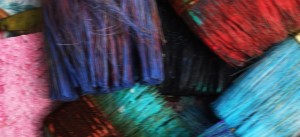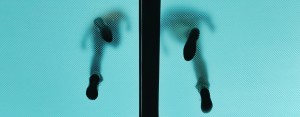Engineering Poster Presentations with Peer Assessment

At a Glance
Discipline
- STEM
- Engineering
Instructional Level
- University
Tasks in Workflow
Social Plane(s)
- Individual
- Group
Type of Tasks
- Reviewing & assessing peers
- Creating & designing
- Presenting
Technical Details
Useful Technologies
- Laptops
Class size
- Large (100-250)
Time
- Multiple class periods (2-3 classes)
Instructional Purpose
- Application & knowledge building
- Assessment & knowledge refinement
Overview
This activity is intended to develop presentation skills and to gain an appreciation for the interdisciplinary nature of engineering projects. Furthermore, this activity allows students to understand how they perform in a group according to their peers.
The teaching assistant assigns students to a group of 4 to 6 students. Only a portion of students from this class will present posters while others have chosen to make a video or do a debate.
In their assigned groups, the students pick an engineering challenge identified by the National Academy of Engineering. Each group makes a poster which discusses this topic along with describing the role of at least east two engineering disciplines and two non-engineering disciplines that must work collaboratively together in this project.
In class, the instructor and teaching assistants set up hanging poster numbers where the students should hang their posters. The instructor divides the posters into two groups (those who will present first and those who will present second). Students presenting posters set up their posters and all students in the class pick up a form to vote for their favourite poster.
Half of those groups presenting a poster will present to and be evaluated by the teaching assistants and the instructor, while all students who are not presenting vote for their favourite poster. At half time, those who were presenting first now go and around vote for their favourite poster while those who have posters and were voting now present. The teaching assistants and the instructor go around and mark a portion of all of the posters. The evaluation is based on the poster content, organization and presentation. At the end of the class, student votes are collected.
In the following class, a prize is given to the top three posters which is based on the student votes.
Students fill out a group peer and self-evaluation form and submit this form to the course website.
Teaching assistants compute final grade which is based on the average of three evaluations from the teaching assistants and the instructor plus the average of all peer evaluations and the self evaluation.
This activity was performed in a class of 200 students.
Instructional Objectives
To develop an appreciation for the interdisciplinary nature of engineering. To develop presentation skills. To understand how you (the student) work in a group/team.
Workflow & Materials

Activity Workflow
Applied Strategies
Published: 18/09/2018
Copyright: © 2025 Chen. This is an open-access article distributed under the terms of the Creative Commons Attribution License (CC BY). The use, distribution or reproduction in other forums is permitted, provided the original author(s) and the copyright owner(s) are credited and that the original publication on this website is cited, in accordance with accepted academic practice. No use, distribution or reproduction is permitted which does not comply with these terms.


